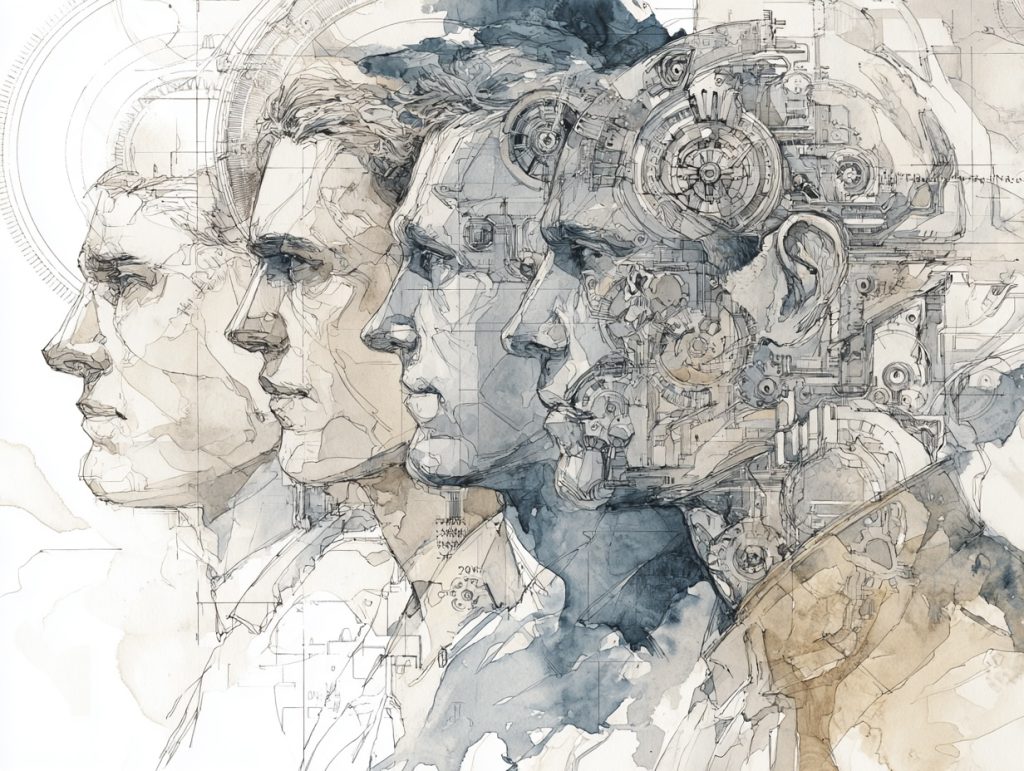
AI is reshaping what it means to be a technical professional; and not everyone feels ready.
For many engineers and technical experts, the challenge of AI isn’t just technical, it’s psychological.
The rapid shift from deterministic systems to probabilistic AI creates hidden anxieties: “Will I still have an edge?” “Can I trust an algorithm I can’t fully explain?” “What happens when a client wants answers I don’t have?”
Here’s the good news: these barriers are not permanent. Once we see them for what they are; predictable psychological responses to change, we can equip ourselves with the tools to move past them.
In this issue, we’ll explore three psychological barriers slowing down technical professionals in adopting AI, and the concrete steps you can take to overcome each one.
1. AI Imposter Syndrome: “If I don’t master this now, I’ll be left behind.”
The rise of AI has created a pressure many engineers quietly carry: the sense that unless you learn everything about AI immediately, you’ll become obsolete. This is a classic case of AI imposter syndrome, the nagging doubt that you’re never knowledgeable enough about the most recent tools, models, or frameworks.
Why it happens:
- Engineering culture is built on mastery of systems. Determinism, if you know the inputs, you can predict the outputs. AI cracks that wide open. It’s messy, probabilistic, and feels unpredictable.
- When the rules of the game shift, technical professionals fear losing their advantage.
How to move past it:
- Reframe expertise: No one will ever “master AI” in its entirety. Instead, slice the problem. Choose a specific application area (e.g., automating reports, anomaly detection). Depth comes from use, not theory.
- Normalize the learning curve: Label yourself a practitioner-in-progress, not a fraud. Clients and colleagues value progress they can see, not hidden mastery.
- Pair old with new: Anchor AI knowledge against deterministic engineering strengths. For example, pair your knowledge of system behaviors with AI’s ability to surface anomalies faster than rule-based logic.
👉 Takeaway: You don’t need to know “all of AI.” You need to know how it applies to your domain.
2. The Black Box Problem: “How do I trust what I can’t explain?”
Technical professionals love transparency. If a system fails, you debug, trace, and locate the flaw. AI doesn’t always play by those rules. Models, especially deep learning ones, generate outputs without human-readable logic. Enter the black box anxiety: fear of adopting a tool you can’t fully justify.
Why it happens:
- Technical professionals historically are rewarded for 100% explainability. AI asks for comfort with probabilities (“80% confidence we’re right”). That shift feels like abandoning rigor.
- Clients often magnify the anxiety: “How can I trust results you can’t explain?”
How to move past it:
- Shift from explanation to assurance: Adopt an evidence-based trust approach. You might not explain every decision layer of the model, but you can validate its output through controlled testing, benchmark comparisons, and consistent performance.
- Practice probabilistic communication: Technical professionals who can clearly say, “Here’s what the system predicts, here’s the margin of error, here’s how we’ll monitor it” build credibility.
- Lean on frameworks of interpretability: Tools like SHAP (using game theory), LIME (explains each prediction), or simpler surrogate models often give enough transparency to bridge the trust gap without overpromising.
👉 Takeaway: Clients don’t need to see inside the algorithm; they need confidence in your process of governing it.
3. Loss of Control Fear: “What happens when the machine outpaces me?”
Perhaps the deepest anxiety is the fear of becoming secondary; that AI won’t just assist you, but replace you. This isn’t just about job security; it’s also about professional identity.
Why it happens:
- AI is framed as “autonomous,” which frames engineers as redundant rather than essential.
- Technical professionals often underestimate their human differentiators, judgment, context, and systems thinking.
How to move past it:
- Adopt the Co-Pilot Mental Model: AI doesn’t need to be a competitor. Treat it as a junior partner: fast at tactical tasks, but still requiring your strategic oversight.
- Highlight unique value: Focus conversations with clients and leaders on what humans uniquely provide: ethical reasoning, contextual awareness, and the ability to align outputs with business goals.
- Experiment in low-stakes environments: Deploy AI first in safe zones (documentation support, trend analysis), where there’s minimal reputational risk. Experience builds confidence.
👉 Takeaway: AI doesn’t erase your role. It enlarges the playing field where your judgment and creativity matter most.
Practical Steps for Psychological Flexibility
If you want a quick framework for navigating the human side of AI, try this:
- Name the fear. When you label it (imposter syndrome, black box anxiety, control loss), you instantly reduce its power.
- Pair AI with purpose. Don’t learn AI in the abstract; anchor it to a business problem or engineering challenge.
- Start microscopically. Pick one workflow to augment, track its impact, and scale from there.
- Build conversational fluency. Practice explaining AI in terms of probabilities, trade-offs, and business relevance.
- Celebrate iterative wins. Progress in AI comes from applied learning, not overnight mastery.
Closing Thought
Resistance to AI adoption among technical professionals isn’t about laziness or lack of skill, it’s about psychology. When systems change the rules of certainty, trust, and control, it’s natural to feel unsettled.
But here’s the truth: the future doesn’t belong to the people who know AI best. It belongs to those who know how to work with it, frame it for others, and integrate it into human-driven systems of trust and value.
The barrier isn’t technical. It’s human. And once you cross that psychological frontier, you’ll be leading where others are hesitating.
Leave a Reply